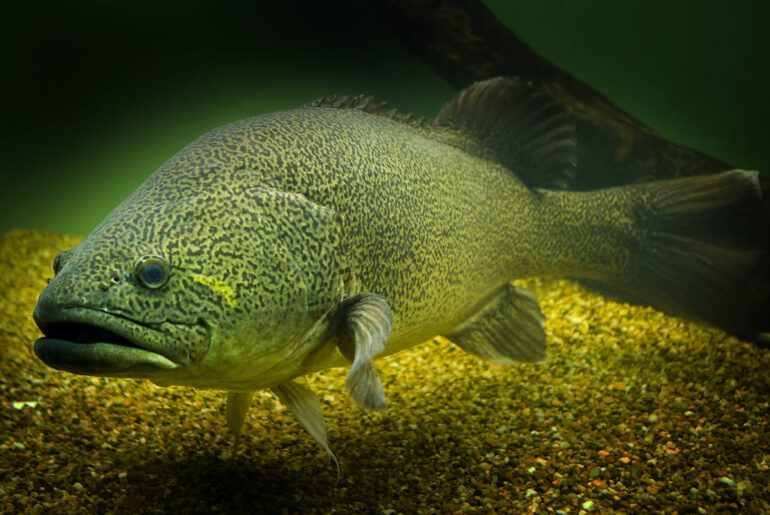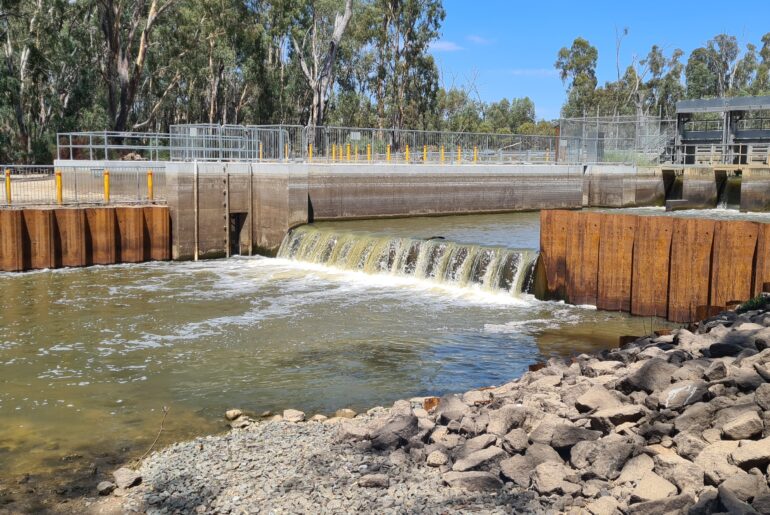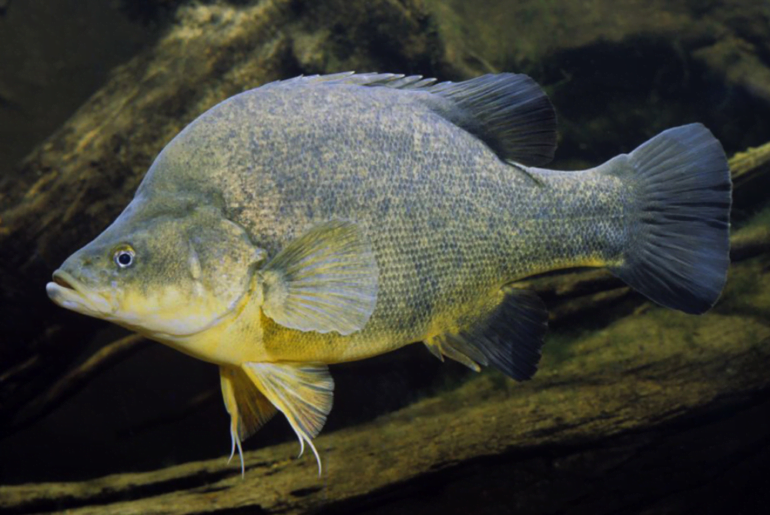The endangered native Murray cod is Australia’s largest freshwater fish, reaching lengths of up to 180cm and weighing-in over 100kg. The species is found naturally throughout the Murray-Darling Basin, and is an important part of the basin’s ecosystem.
In April 2021, a survey of Murray cod was undertaken at Oakey Creek in Queensland. Oakey Creek is located within the Condamine catchment of the northern Murray-Darling Basin, near Toowoomba. The survey was conducted within the Dewfish Demonstration Reach, where extensive riparian and instream rehabilitation has been undertaken since 2007. Prior to the establishment of the Demonstration Reach, very few native fish were known to live in the area; however, river restoration works, including exclusion of cattle from riparian areas, riparian revegetation, removing barriers to fish passage, installing wooden habitats for Murray cod and concrete pipes, and introducing large woody debris have promoted native fish population growth in the Oakey Creek. Before the Demonstration Reach activities began, zero Murray cod were caught in the reach by electrofishing surveys.
Sampling was carried out by David Nixon and Jenny Shiau of the Queensland Department of Agriculture and Fisheries and took place at selected short reaches where they had access. In total, 46 Murray cod were sampled, ranging in size from 195mm to 915mm. It is predicted that there were much higher numbers of fish that weren’t able to be sampled due to the depth of the river and high turbidity in some locations. The Murray cod density at three of the reaches sampled was 3, 4 and 6 fish per 1,000 square metres, whereas other sections were below 1 fish per 1,000 square metres.
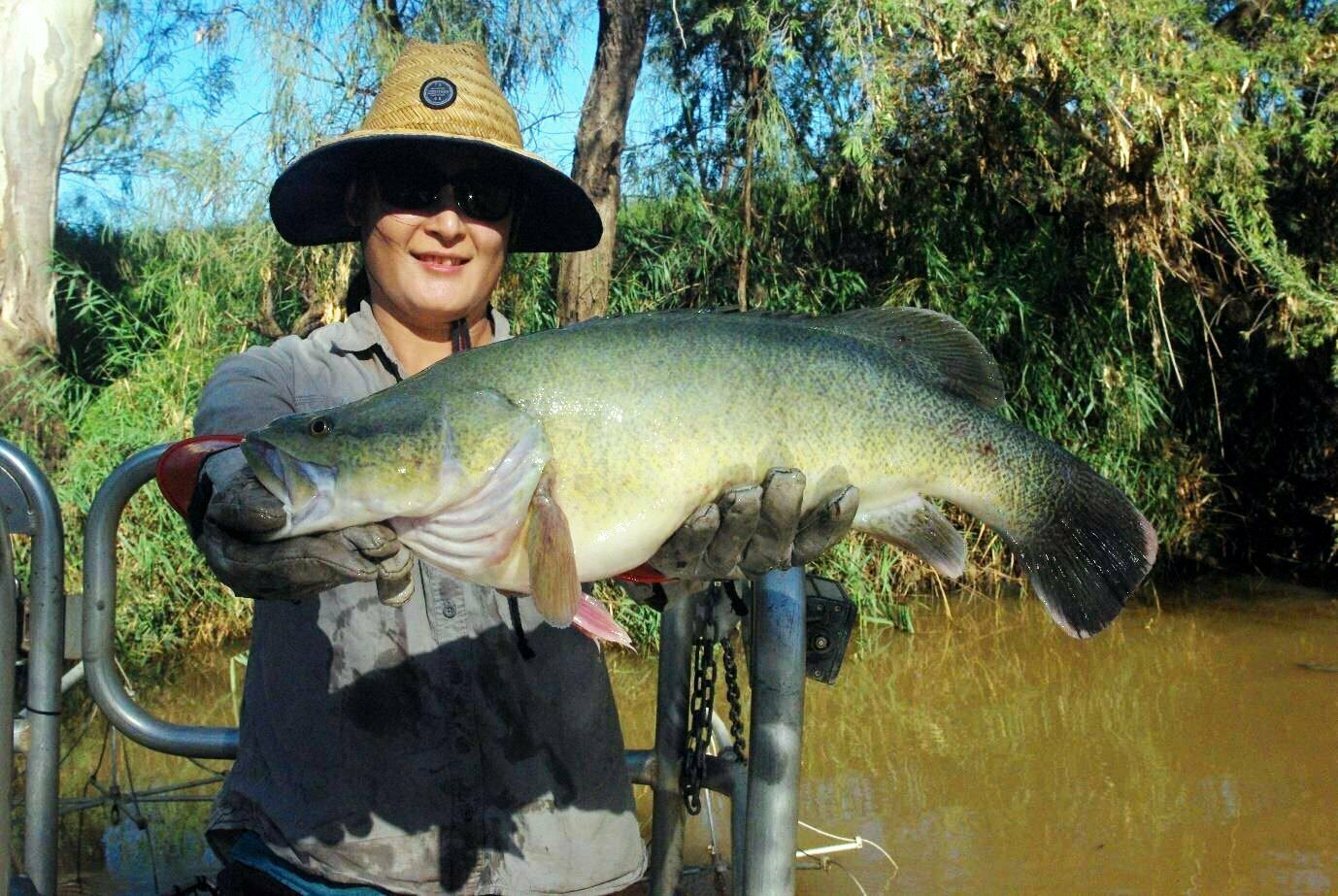
Promisingly, most of the sampled fish were over 500mm in length, indicating that most fish in the area are sexually mature. This is important as it means the environment is recovering and able to support a growing population of native fish. Very few small Murray cod were caught – only four were below 300mm in length. It is easier for smaller fish to hide from electrofishing technology in areas with high density of snags, so it is likely that the technology was unable to pick up the smaller fish.
The fish were sampled using electrofishing methods, which involved stunning and netting the fish to measure their length and to identify the sex. The process ensured the fish were minimally handled and released at their point of capture. Many fish sank when stunned and were unable to be captured, whilst other fish were observed by the researchers but were out of the range of the electrofishing machine so they were unable to be measured. This means it is highly likely that there are much higher numbers of fish living in the creek than measured.
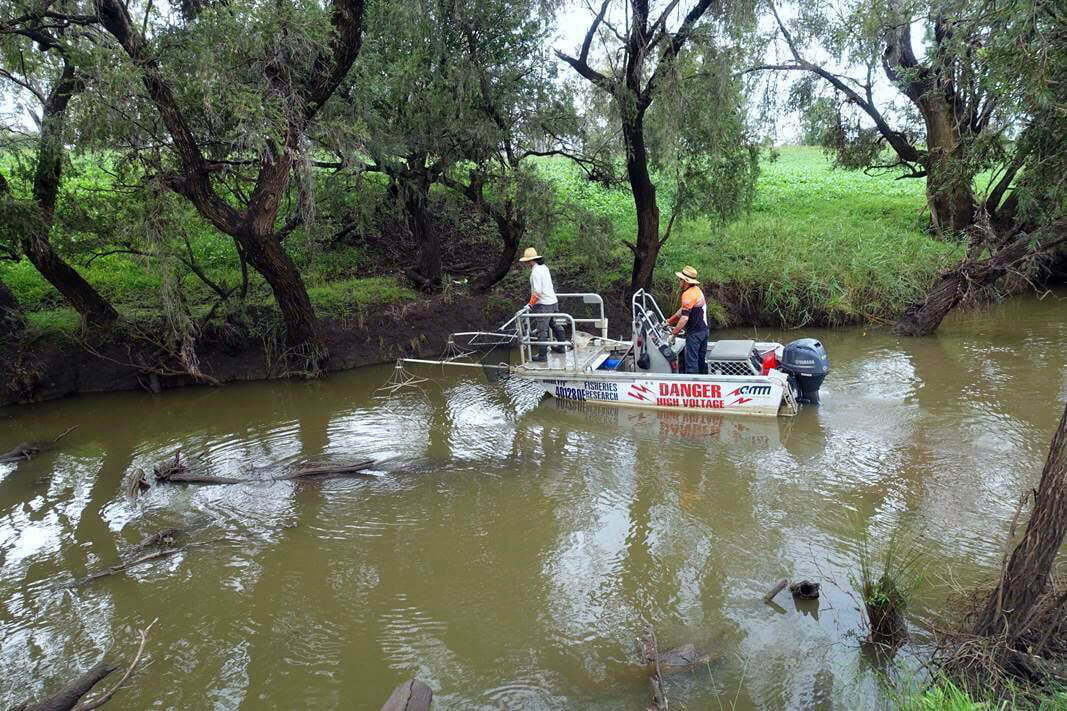
The fish caught were all in good condition, with low levels of lernaea (a parasite that is often in freshwater fish) and two of the caught fish were missing one eye due to past injuries, likely from bird attacks. The rehabilitation works on the Demonstration Reach have clearly enhanced the habitat for the Murray cod and other native freshwater fish, as all fish were of a decent size, indicating that there are enough food resources in the area to support a large population. Interestingly, some of the fish caught even displayed signs of ingesting mice.
Overall, the survey demonstrated that sites with the highest numbers of Murray cod generally had high timber snag densities and medium-high riparian condition, however, most of the sites lacked rocky habitats. This survey is useful for riparian managers, as it indicates the importance of implementing woody habitats and snags, as well as maintaining high quality riparian zones for Murray cod to thrive. The results from the survey are a positive indication that the rehabilitation works in the Demonstration Reach have been successful in restoring the natural habitat of the Oakey Creek.
Featured Image: Lower reach of Oakey Creek. Photo credit: Queensland Department of Agriculture and Fisheries.

